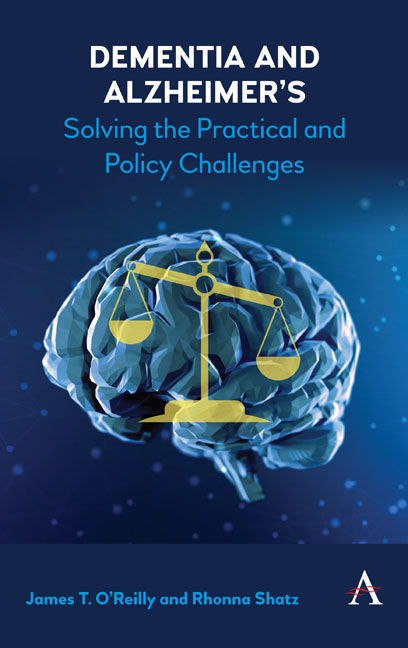Book contents
- Frontmatter
- Contents
- 1 Introduction
- 2 The family dynamics of dementia
- 3 Tort liability related to dementia
- 4 Dementia and private insurance
- 5 Medicare, Medicaid, disability and other government benefits
- 6 Dementia and residential care facilities
- 7 Adult protective services in dementia cases
- 8 Dementia and financial issues
- 9 Dementia in probate and guardianship
- 10 Dementia and employment issues
- 11 Drug research and new product developments for dementia
- 12 Dementia and criminal justice
- 13 Understanding your expert's advice about brain deterioration
- 14 Understanding the causes of Alzheimer's disease
- Appendix: Finding medical reference sources about dementia
- Index
6 - Dementia and residential care facilities
- Frontmatter
- Contents
- 1 Introduction
- 2 The family dynamics of dementia
- 3 Tort liability related to dementia
- 4 Dementia and private insurance
- 5 Medicare, Medicaid, disability and other government benefits
- 6 Dementia and residential care facilities
- 7 Adult protective services in dementia cases
- 8 Dementia and financial issues
- 9 Dementia in probate and guardianship
- 10 Dementia and employment issues
- 11 Drug research and new product developments for dementia
- 12 Dementia and criminal justice
- 13 Understanding your expert's advice about brain deterioration
- 14 Understanding the causes of Alzheimer's disease
- Appendix: Finding medical reference sources about dementia
- Index
Summary
Overview
This chapter addresses care of the dementia patient outside of the home, in a residential facility. Those persons with advanced forms of dementia are likely to have “functional and cognitive vulnerabilities” which induce the family to send them into residential care, such as a skilled nursing facility.
For our purposes, this chapter's discussion will include most of what are euphemistically called “senior living options”:
• skilled nursing facilities;
• “continuing care” facilities with multiple subunits for multiple stages of dementia;
• end-of-life hospices;
• remedial rehabilitation facilities;
• assisted living residences; and
• intermediate care facilities.
Older “board and care homes” are rare, yet still exist in some communities.
The common theme is that the resident with dementia had formerly lived in their own home before the onset of dementia, and they are being moved at the impetus of family or friends into a safer and more secure environment, where they will not be permitted to wander away and are less likely to be exposed to risks.
We contrast these living spaces called “assisted living” communities with normal market-price apartments and with homes that are owned or leased by families or individuals, some of whom may be dementia patients; and patients residing in those sites can be served by visiting nurse organizations or go unserved.
We are neither discussing group homes for mentally challenged adults nor addressing state or federal government poverty-related “homes” or residential shelters for veterans, elderly seamen, Native Americans and so on.
This siting for the patient is an important subject for discussion. It is very likely that a residential setting will be part of the patient's future accommodations, during the several years after his or her receipt of a dementia diagnosis. A brief hospital stay after a fall, for example, may lead to a recommendation for transition to a care facility. Unlike an acute disease or severe accident with a long hospital stay, the patient with a dementia diagnosis is likely to remain mobile and under periodic medical care. On a physical level, he or she may be functioning well at first, before entering a slow decline.
- Type
- Chapter
- Information
- Dementia and Alzheimer'sSolving the Practical and Policy Challenges, pp. 37 - 44Publisher: Anthem PressPrint publication year: 2019



